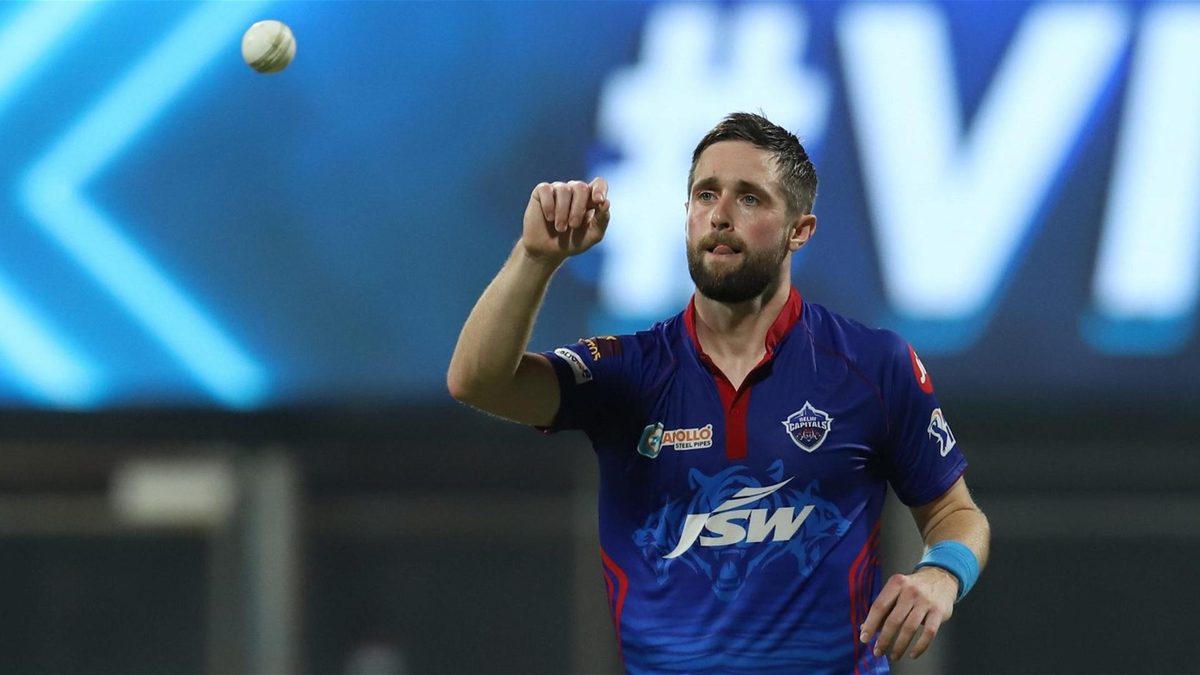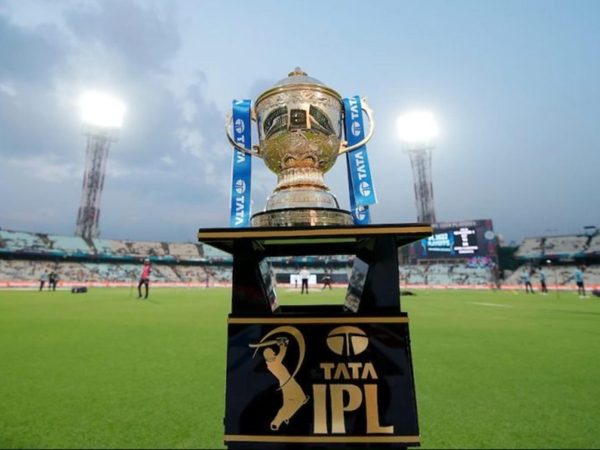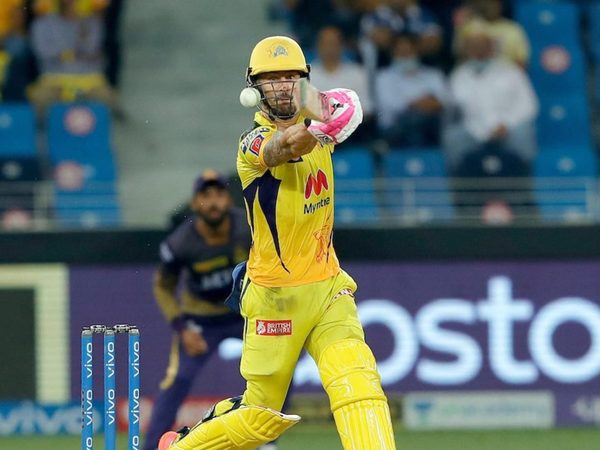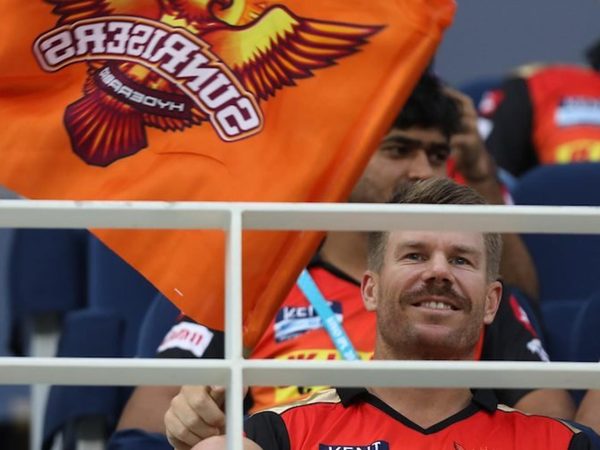
Ben Gardner examines the strange T20 career of Chris Woakes, one of England’s most valuable Test and ODI cricketers, but rarely seen in the shortest format.
It’s a strange thing to say about a man whose personal trophy cabinet includes a Wisden Cricketer of the Year award and Ashes and World Cup winners medals, but Chris Woakes might just be the breakout star of the 2021 Indian Premier League. Given a chance due to the late arrival of Delhi Capitals’ South African spearheads, only Andre Russell, among overseas players, has more wickets at the time of writing, while no seamer to bowl in more than one game has a better economy rate.
After taking 2-18 in three overs in Delhi Capitals’ opening high-scorer against Chennai Super Kings, he was given his full quota in game two and excelled once more, taking 2-22 in four overs, both new-ball wickets. Those included the scalp of Jos Buttler, foxing his England team-mate with a sharp off-cutter, while a hard-to-pick split-fingered slower ball is a new addition to the armoury.
With Tom Curran struggling in the same side, Woakes is surely ahead of him in the battle for overseas spots, now both Kagiso Rabada and Anrich Nortje are available too. It’s reasonable to wonder whether the same might also soon be true in the race for England selection.
These are small sample sizes and atypical pitches, sure, but, for now, it’s all we have to go on. Before the IPL, Woakes’ last T20 game of any sort came in 2018, while to find an England cap you have to go back to November 2015, before, among plenty of other things, Jofra Archer’s professional debut.
In that time Woakes established himself, until Archer’s emergence, as England’s attack leader in ODI cricket, as well as looking as likely as anyone to inherit James Anderson’s berth as Test opening bowler. So why has he fallen so far in the shortest format, not just from England’s squads, but, seemingly, from their minds too?
There is a partial cricketing explanation, with Woakes’ skill-set in both disciplines arguably least suited to T20 cricket out of the three formats. While he excels with the new ball in ODIs, England appear to have settled on Mark Wood and Archer as their main Powerplay seam operators, and Woakes’ other strength is his versatility, with him capable of bowling at several stages of a 50-over innings. This is more valuable in the longer white-ball format, where a seamer getting through most of their workload in one spell is rare.
With the bat, his best work has come firefighting, when he’s been in early and forced to rebuild. His two high ODI scores, 95 against Sri Lanka at Trent Bridge in 2016 and 78 against Australia at Adelaide in 2018, came when England had been 82-6 and 8-5 respectively. Hitting out from ball one, as is required of a lower-order batsman in T20s, isn’t hugely his game.
Still, Woakes has shown throughout his career that he is a resourceful, ever-improving cricketer, and there’s no reason why, in theory, he couldn’t become a useful death-overs bowler or capable of smashing sixes from the start of his innings. But he hasn’t had a chance to show he can be anything different, and in part, it’s a compliment. So important has he become to England in the other two formats that they have had to find time to rest him elsewhere, which has limited his T20 opportunities. A chronic knee issue has also needed careful management.
Even then however, Woakes’ total absence from any discussion isn’t quite explained away. Joe Root has been similarly absent from England’s squads with a similar set of reasons to justify it, and yet rarely a T20 series goes by without clamour for him to bat at No.3 for England. Woakes is more sought after in the IPL, and fulfils a role England have less depth in than Root does. The difference might just be in how each views themselves.
Compare and contrast two recent quotes from each on their T20 World Cup chances. “Absolutely, I would love to be a part of that World Cup squad, I love playing all three formats, everything is a different challenge,” was Root’s reasonably punchy answer when asked about his hopes, back in February.
Woakes, meanwhile, talks like a man who feels his time has gone. “[The selectors] know what I’m about and what I can do,” he said in March 2020. “But realistically it’d probably take a few injuries for me to be in contention.” Now he refers to the short-form side solely in the third person. “They seem to be in a very similar position to our team heading into the 2019 World Cup,” he said, in December. “Leading up to the World Cup we had a very good four-year period – there were losses along the way but we felt it was a learning curve and we were trying to peak. This T20 side looks to be the same.”
Being self-effacing and complimentary is a trait that has endeared Woakes to England fans, but it’s hard not to wonder if a bit more self-promo might not go amiss. Promisingly, the signs are that, after a winter spent stewing on the sidelines even as England rested and rotated all their first-teamers, he might finally be ready to make himself heard.
“After the summer I had, maybe my best since 2016, I felt like it was my shirt,” he told the Guardian during England’s ODI series in India. “Six months down the line I haven’t played a game and that’s simply the word for it: frustrating.”
It’s not quite Stuart Broad fuming in the diary room, though “I felt like it was my shirt” is a word-for-word repetition of one snippet from that outburst. Woakes will need the ball to do plenty more talking in the rest of the IPL if he is to make his case, but his mouth will, for once, need to do some of the work too.








